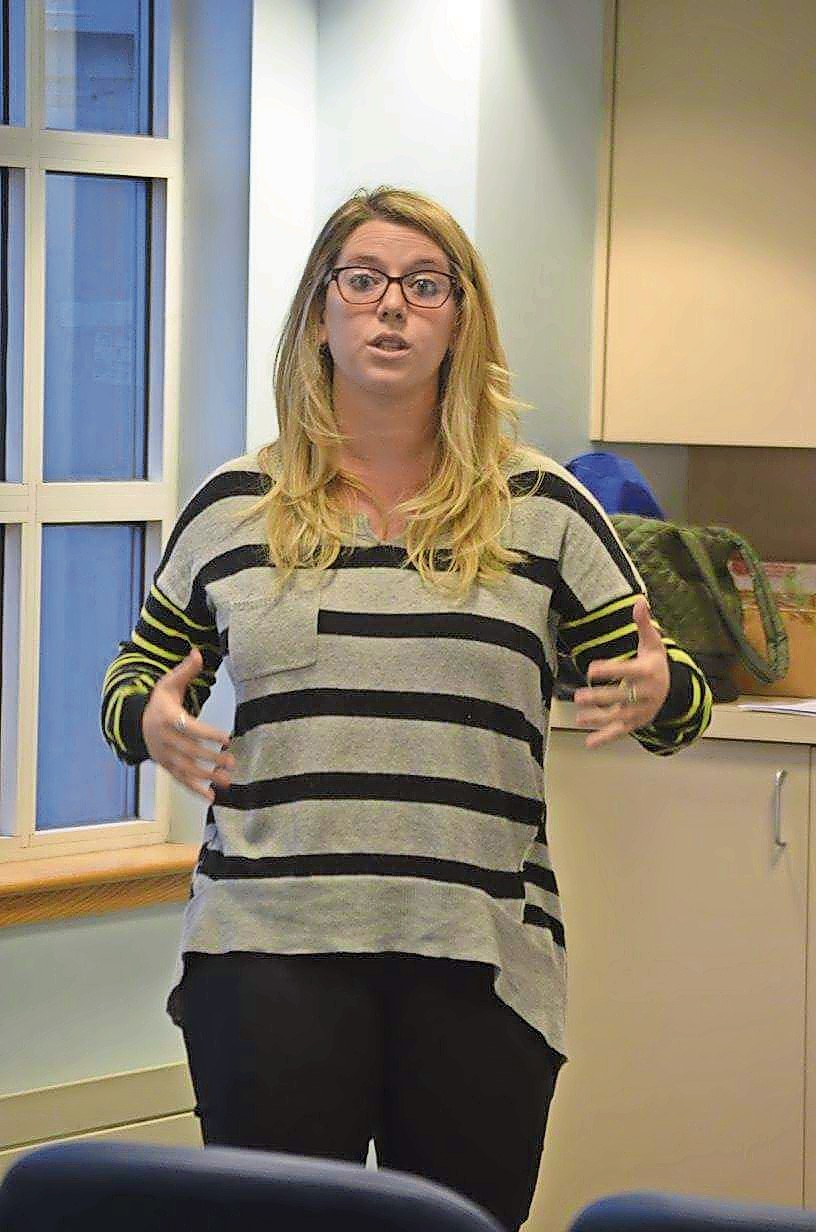Drugs are all around us
It was an evening of frank discussion of the drug epidemic on Long Island, featuring Brittany Becker, the community education and prevention specialist for the Long Island Council on Alcohol and Drug Dependence, and two officers from the Nassau County 4th Precinct Problem Oriented Policing unit.
LICADD specializes in substance-abuse treatment. Becker said that its counselors are the people to call when you realize you or a loved one is struggling with a drug problem, when you see someone acting strangely or you find a bag of a strange-looking substance.
The Island Park Business and Residential Chamber of Commerce presented the discussion on June 28. President Terry Reichel was responding to inquiries by residents about an apparent increase in the number of overdose calls and deaths that have been reported in Island Park.
“It’s a very small community, as you know,” Reichel said. “We’re all very tight; we all look out for each other. We all look out for our kids most of all. I personally have seen an increase [in police], and I think it’s important for people to know.”
“Right now, we are seeing one person die every 19 minutes to an overdose, to substance use,” Becker said, referring to the national death rate. “So when I go into schools and do a presentation, I ask, ‘How many have we potentially lost just this class? Two, right, or more?’ For heroin and opioids alone, Suffolk County has the highest numbers in New York state of loss from fatal overdoses, and Nassau is next — not including alcohol, marijuana, cocaine and all the other drugs. So when you think about this, we are losing a person, if not more, a day. Not just a young person. This is affecting all ages, all different socioeconomic backgrounds, races, genders. It’s not that picture — that picture of who’s a heroin user. And when we have that picture in our head, we usually miss the people who are right in front of us.”
Becker said that while the use of opioids is increasing, the fatalities are decreasing, because more people are intervening, more are being trained in the use of Narcan (an opiate antidote generically known as naloxone), and more are trying to help people. She added that it once typically took seven to 10 years for a person to progress from using so called “gateway” drugs like alcohol or marijuana to heroin, but that time frame has now shrunk to six months to two years.
As well, THC, the psychoactive ingredient in marijuana, is more than 100 times stronger than in the pot of years ago. And Becker added that most of the marijuana here is laced with heroin, methamphetamine, cocaine or ecstasy. She explained that people who take part in studies of drug use often say they only smoke marijuana, but test positive for the stronger drugs. And in some cases, users skip “gateway” drugs altogether and start by using prescription drugs such as oxycodone.
Police officers John Zanni and Greg O’Neill said that in past years there were issues with budget and staffing, but the county has trained and hired many new officers. “We are flooding the streets,” O’Neill said.
Both officers stressed the importance of calling 911, and explained that what happens in the police force is data-driven. If they see a number of 911 calls, they will flood that area. When the police do monthly reports, they examine the database to see where the calls came from, and assign officers to target those areas.
O’Neill addressed the fear people have about calling 911, saying, “The call goes through dispatch. They are going to try and get as much information out of that call as they can — name, telephone number. You don’t have to give any of that. If it is an anonymous call, they will still send it out to us. We just won’t have as much information, but that’s fine.”

 51.0°,
Mostly Cloudy
51.0°,
Mostly Cloudy 




